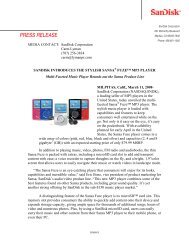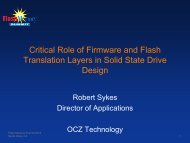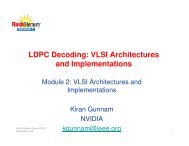LDPC Decoding: VLSI Architectures and Implementations
LDPC Decoding: VLSI Architectures and Implementations
LDPC Decoding: VLSI Architectures and Implementations
Create successful ePaper yourself
Turn your PDF publications into a flip-book with our unique Google optimized e-Paper software.
Memory organization<br />
• Q memory width is equal to circulant size *8 bits <strong>and</strong> depth is number of block columns for<br />
1-circulant processing.<br />
• HD memory width is equal to circulant size *1 bits <strong>and</strong> depth is number of block columns for<br />
1-circulant processing.<br />
• Qsign memory width is equal to circulant size *1 bits <strong>and</strong> depth is number of non-zero<br />
circulants in H-matrix for 1-circulant processing.<br />
• FS memory width is equal to circulant size*(15 bits(=4 bits for Min1+4 bits for Min2 index+1<br />
bit+6 bits for Min1 index).<br />
• FS memory access is expensive <strong>and</strong> number of accesses can be reduced with scheduling.<br />
• For the case of decoder for regular mother matrices: FS access is needed one time for Rold<br />
for each layer; is needed one time for R new for each layer.<br />
• For the case of decoder for irregular mother matrices: FS access is needed one time for<br />
Rold for each layer; is needed one time for R new for each non-zero circulant in each layer.<br />
Flash Memory Summit 2013<br />
Santa Clara, CA 33
















